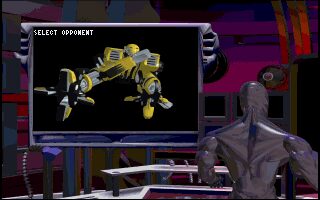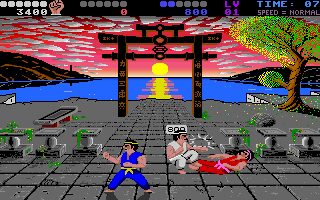Rise Of The Robots is a sci-fi player vs player beat-em-up created by Instinct Design and published by Time Warner. It was released for the Amiga, Amiga CD32, Sega Genesis/Mega Drive, MS-DOS, and other platforms.
The game was released for the Amiga in 1994 with enormous hype and expectations. Promoted as a revolutionary fighting game with groundbreaking graphics, it promised cinematic visuals, AI-driven opponents, and a gritty cyberpunk atmosphere. The marketing campaign emphasized its use of pre-rendered 3D models and the involvement of Queen’s Brian May for the soundtrack, although in the Amiga version, only a brief guitar riff survived due to hardware limitations.
Visually, the Amiga version of Rise of the Robots was impressive for its time. The pre-rendered fighters looked detailed and shiny, evoking the look of futuristic machines in a dystopian setting. Backgrounds, though static, matched the cold and industrial theme. On a technical level, the game pushed the Amiga hardware with its character sprites and animations, though some fluidity was lost compared to the DOS version running on a high-end PC.
Unfortunately, the gameplay didn’t live up to the promises. The game featured only a single playable character in the story mode—Cyborg—and a very limited move set, resulting in repetitive fights. The AI, which was supposed to adapt and offer a challenge, often fell into predictable patterns. The lack of depth and responsiveness in the controls was especially disappointing in a genre that depends heavily on precision and timing. The Amiga’s single-button joystick setup didn’t help, and special moves were awkward to perform.
Compared to genre-defining fighters like Mortal Kombat or Street Fighter II, Rise of the Robots offered little tactical variety or excitement. While those games encouraged skill development and offered a range of characters and combos, Rise of the Robots felt static and superficial.
Despite its flaws, the game made an impression due to its visuals, and for many Amiga users it remained a technical curiosity—an example of the trade-off between graphical ambition and gameplay substance. It was widely criticized by the press for its lack of depth and is now often remembered more as a cautionary tale in video game design than a classic. Still, it remains an interesting chapter in Amiga history, showing how the pursuit of visual spectacle sometimes came at the cost of engaging gameplay.













